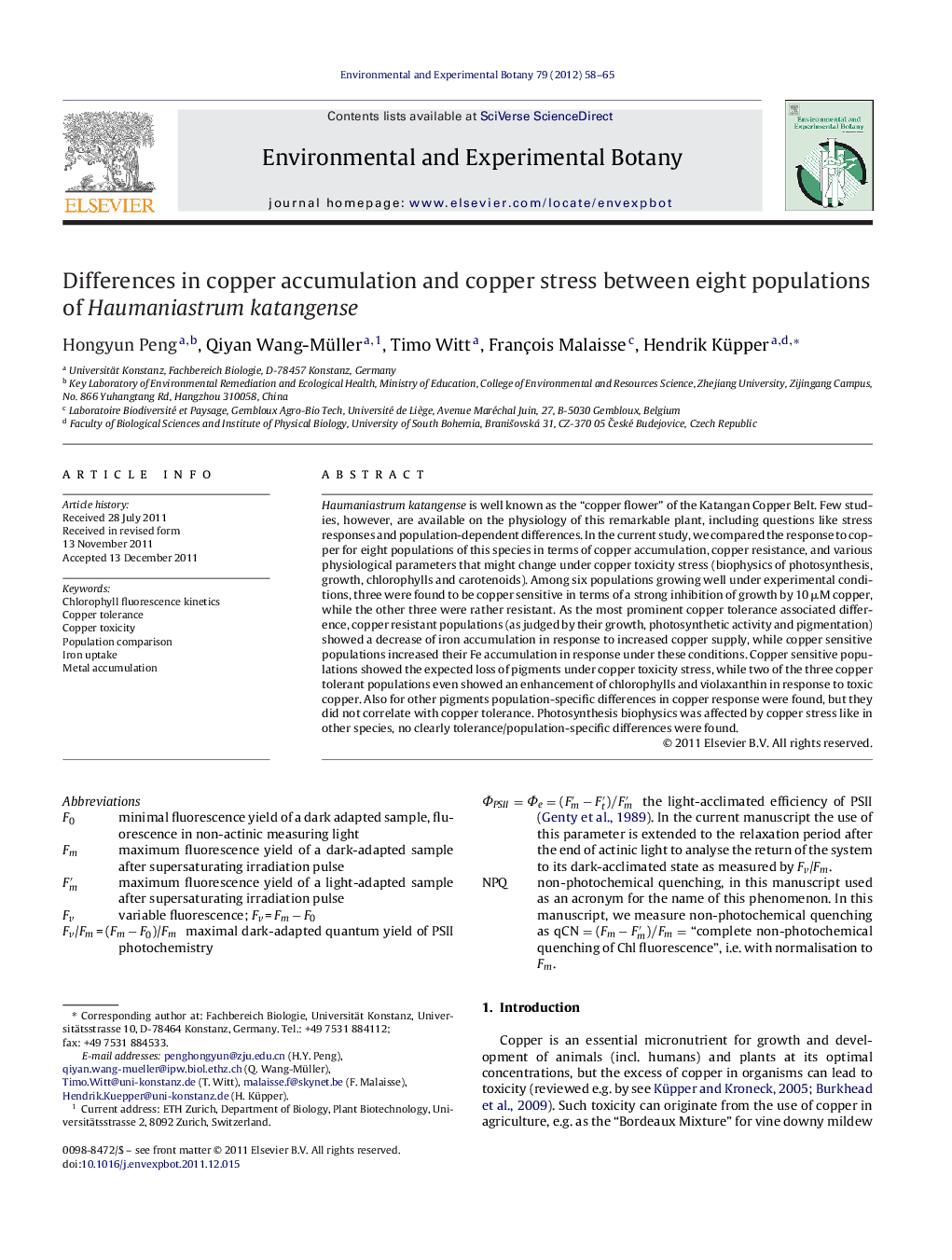| Article ID | Journal | Published Year | Pages | File Type |
|---|---|---|---|---|
| 4554658 | Environmental and Experimental Botany | 2012 | 8 Pages |
Haumaniastrum katangense is well known as the “copper flower” of the Katangan Copper Belt. Few studies, however, are available on the physiology of this remarkable plant, including questions like stress responses and population-dependent differences. In the current study, we compared the response to copper for eight populations of this species in terms of copper accumulation, copper resistance, and various physiological parameters that might change under copper toxicity stress (biophysics of photosynthesis, growth, chlorophylls and carotenoids). Among six populations growing well under experimental conditions, three were found to be copper sensitive in terms of a strong inhibition of growth by 10 μM copper, while the other three were rather resistant. As the most prominent copper tolerance associated difference, copper resistant populations (as judged by their growth, photosynthetic activity and pigmentation) showed a decrease of iron accumulation in response to increased copper supply, while copper sensitive populations increased their Fe accumulation in response under these conditions. Copper sensitive populations showed the expected loss of pigments under copper toxicity stress, while two of the three copper tolerant populations even showed an enhancement of chlorophylls and violaxanthin in response to toxic copper. Also for other pigments population-specific differences in copper response were found, but they did not correlate with copper tolerance. Photosynthesis biophysics was affected by copper stress like in other species, no clearly tolerance/population-specific differences were found.
► We compared the Cu-response for 8 Haumaniastrum katangense populations from different habitats. ► Cu-tolerant populations decreased Fe-accumulation in response to increased copper. ► Cu-sensitive populations increased Fe-accumulation in response to elevated Cu. ► Cu-toxicity in sensitive populations led to enhanced loss of pigments. ► In Cu-tolerant populations, chlorophylls & violaxanthin increased at high copper.
